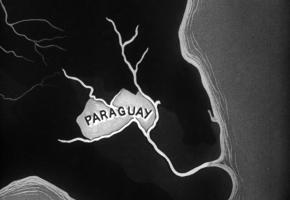The Argentine Golden Age
In 1896, a photographer called Eugene Py, with his two bosses, Henri Lapage and Max Glücksmann from ‘Casa Lapage’, (a photographic supply store), had the good fortune to see the debut of the Lumière Cinématographe at the Odeon in Buenos Aires, that took place on July 18th 1896. They immediately imported a Guamont camera and French equipment from France, and Py produced their first film “La Bandera Argentina” (1897) opening the door to the Argentine Film Industry.
The Golden Age was to be between the 1930s and the 1950s, when Hollywood got involved. During that time, stars like Luis Sandrini, Carlos Gardel, Armando Bó and Lolita Torres were hugely popular. Not least Mirtha Legrand (born 1927) who became a hugely famous TV personality with her programme “Almorzando con Mirtha Legran” (Lunches with Mirtha Legrand) With 36 films under her belt and umpteen TV awards, she is now 93 and still going strong!
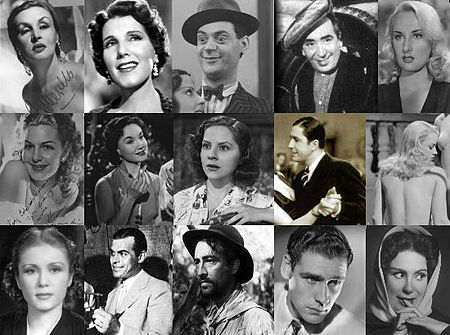 Stars of the 30-50s
Stars of the 30-50s
Inspiring Hollywood
Argentina inspired Walt Disney after his goodwill tour, that led to "Saludos Amigos” (1942) and “The Three Caballeros" (1944). Around that time, all things Argentine became very popular, in particular the Tango. Films featuring tango singer Carlos Gardel were hugely popular in particular, “El Día que me Quieras” (1935)( The Day you will Love Me) released posthumously after his tragic death in a plane crash in 1935 in Colombia. Valentino, in full gaucho gear, finds himself rather swamped as he has a not-so-valiant attempt at a Tango with his co-star Beatrice Dominguez, in “The Four Horsemen of the Apocalypse” (1921).
Argentine Erotica
In the period of the ‘New Cinema’ of the 1950s & 1960s, director Armando Bó developed an intense, erotic style all his own with his muse and actress Isabel Sarli, known as ‘La Coca’. He directed her in 27 films with sexually provocative subject matter, that, although it could be called ‘soft porn’, also offered a revolutionary new approach to women. In his films, it was the woman who was the predator, rather than the other way around. This challenged the status quo. One of his successes, “Fuego” (Fire) (1969) was restored and screened at the Barbican in London in 2016, as part of the “Cheap Thrills: Trash, Movies and the Art of Transgression” film season. Isabel Sarli plays a nymphomaniac that suffers as she unable to get sexual satisfaction from man or woman.
 Isabel Sarli
Isabel Sarli
Intellectual Tradition
Films by Leopoldo Torre Nilsson, also from the 1950s and 60s, were more intellectual and expressed the existential angst typical of some Antonioni films and the Jean-Paul Sartre generation.
“La Casa del Angel” (1957) (The House of the Angel) was based on the novel by his wife Beatriz Guido. This film, with its touch of horror, was well received and launched Torre Nilsson’s career. Set in the 1920s, in a society where political arguments were settled by duels and women were expected to be innocent and naïve, “La Casa del Ángel” is a story permeated by an intensely repressive and claustrophobic atmosphere. The plot concerns Ana (Elsa Daniel) an adolescent who is brought up in an oppressive and hypocritical environment. When she discovers sex, the crudities of life signal an end of her innocence. It is a probably Torre Nilsson’s best film and a lesson in masterly film-making. It was screened at Cannes and also nominated for the Golden Globes. “La Casa del Ángel” (1957) Garden scene by Leopoldo Torre Nilsson. (Film 1)
From Polit-Prop to Political Thriller
In the 1960s, Fernando ‘Pino’ Solanas, an intensely political director, made his name with his epic 3-part documentary: ‘La Hora de los Hornos’ (1968) (The Hour of the Furnaces) and more recently ‘Memories of a Riot” (2004) (Memoria del Saqueo) touching on social genocide. Some of these are so powerful, you feel as if you have been hit on the head with a hammer, (in case you might have missed the ‘message’). However, given Argentina’s turbulent history, riddled with coups, military take overs, populist governments and guerrilla movements, it would be a very insensitive film-maker who could ignore the conditions that most people were living through on a daily basis
Later, however, in his 1988 film ‘SUR’ (The South) with Miguel Ángel Solá playing Floreal Echegoyen, Lito Cruz as ‘El Negro’ and Susú Pecoraro as Rosi Echegoyen, Solanas artfully weaves an emotional, if somewhat nostalgic, story of a political prisoner who is released in 1983, when democracy is restored after the Military Dictatorship. Floreal struggles to come to terms with his changed life outside the prison. His wife has moved on. Then, when his close friend and colleague ‘El Negro’ (who was assassinated), appears before him and wants help to settle a score, touching on dreams and even magic realism, Floreal wanders through the night in a daze, meeting and confronting people who were of importance in his life. ‘El Negro’ helps him release some of his rage and face a new beginning.
As opposed to many other productions, the political aspects of this film are present without being shoved into your face. This not only makes them far more palatable, but the process results in a very successful and moving film. It was immediately nominated for the Palme d’Or at the 1988 Cannes Film Festival, where he went on to win the Best Director Award, followed by the Grand Coral at the Havana Film Festival and the Georges Delerue Award at the Flanders International Film Festival. The direction, cinematography (and music by Astor Piazzola), are all excellent. It is a beautifully crafted film that expresses Solana’s deep love for his country, its people and its music, so it has made its way onto my list! (Film 2)
Cinema in the era of Political Upheaval
Another politically motivated director, Héctor Olivera, hit the ground running with “La Patagonia Rebelde”. This 1974 historical drama is based on the real events of the brutal military suppression of an anarchist union movement in the province of Santa Cruz in the early 1920s. However, as the Military Regime (1975 till 1983) censorship became more intense, Héctor Olivera turned to more oblique criticisms. At the height of the ‘Guerra Sucia’ (the Dirty War), he adapted the play “La Nona” (1979) (Grandma) by Roberto Cossa, creating a fiercely dark comedy brimming with irony, a reference to the foreign debt interest payments that were to bankrupt the Argentine Economy.
This was later followed by the successful collaboration with novelist Osvaldo Soriano whereby he filmed two of his novels: “No Habrá mas Pena ni Olvido” (Funny Dirty Little War) (1983) and “Una Sombra ya Pronto Serás” (1994) (A Shadow you Soon will Be). “Funny Dirty Little War” is a comic gem. It was produced by Fernando Ayala and Luis O. Repetto and stars the legendary Federico Luppi, Miguel Ángel Solá, Ulíses Dumont,Héctor Bidonde and Victor Laplace. A magical combination of Argentine acting royalty that are rarely seen together. With black humour and satire, the film is set in the small country village of Colonia Vela, ‘somewhere’ in central Argentina.
The mayor (Lautaro Murúa) plots with the local Peronist spin doctor (Héctor Bidonde) and the union leader, to kick out the deputy mayor, Fuentes (Federico Luppi) with false accusations, as his popularity is threatening the mayor’s comfortable long–term tenure. They pressurize the deputy mayor to resign, but he reacts by barricading himself with a group of sympathisers in the town hall. This leads to the police, the mayor, the Argentine Anti-communist Alliance, the AAA (Argentine Death squads), various delusional local left-wing guerrilla youths and others, all trying to get in on the act for their own ends and total mayhem ensues. People’s hypocrisies, idiosyncrasies and ingrained self- interests are beautifully observed. It is a political situation that encapsulates Argentine political life with humour and irony. (Film 3)
Post-Dictatorship Cinema
During the post-1983 period, known as ‘El Destape’, translated literally as the ‘Opening’, (although it was more like an explosion), some films became an exorcism of experiences from the dirty war period, from stories of exile (Los Días de Junio (1985) by Alberto Fischermann) to plots rich in sub-texts and metaphors for socio-political issues, like “Apartment Zero”(1988) by Martin Donovan. Even “Camila” (1884) by María Luisa Bemberg, a period piece that examines current relevant issues transposed to the dictatorship period of Juan Manuel de Rosa (1793- 1877).
“La Historia Official” (1985) (The Official Story) by Luis Puenzo, examines the pain of a mother’s search for her adopted daughter’s biological mother, during which she begins to realize that she could be the abducted child of a ‘disappeared’ political prisoner. With Normal Aleandro and Héctor Alterio, this superb film won the Oscar for Argentina for Best Foreign Language Film and Best Screenplay Written Directly for the Screen. (Film 4)
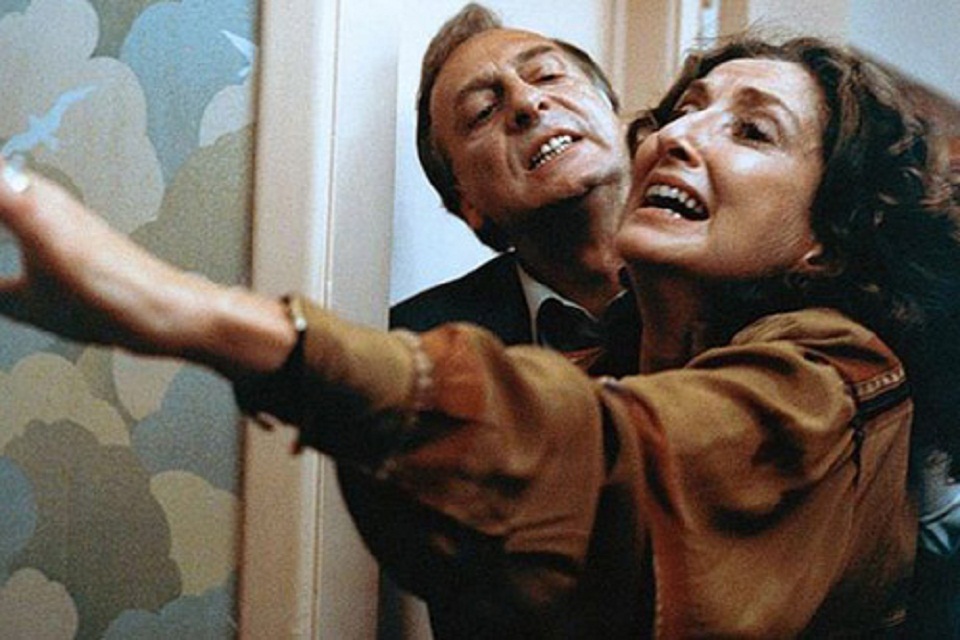 Norma Aleandro and Héctor Alterio
Norma Aleandro and Héctor Alterio
Among this cluster of films that touched on the horrors of the time, we also have ‘La Amiga 1988’ (The Girlfriend) by Jeannine Meerapfel, featuring Liv Ulmann, Cipe Lincovsky, Federico Luppi, Victor Laplace and Lito Cruz. The voice of Liv Ulmann was sensitively dubbed into Spanish by Bárbara Mujica, but Liv Ulmann was very upset, as she felt that half of her performance had been taken away from her. Despite this, both Ulmann and Lincovsky were awarded the Best Actress Award at the 1988 San Sebastian Film Festival. The film also won the Silver Condor at the Argentinean Film Critics Assoc. Awards and the Peace Film Award at the Berlin International Film Festival in 1990.
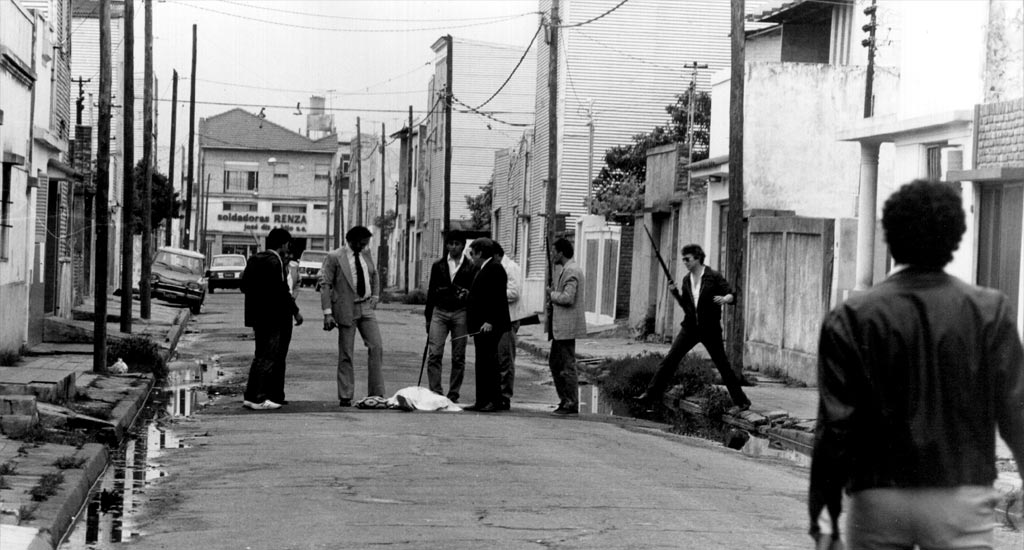
‘La Amiga’ is the story of a close, but complex friendship between two women against the backdrop of the military dictatorship in Argentina. Beautifully scripted, the characters of the two friends is nuanced and powerful, as they pursue their different journeys in life. One, Raquel, (Cipe Linkovsly) becoming the famous actress they had dreamed of as young girls, while the other, María (Liv Ulmann) marries and foregoes her dreams of acting. When one of her three children, Carlos, is ‘disappeared’ by the Military dictatorship, she decides to join the Mothers of Plaza de Mayo. German-Argentine writer/director Jeanine Meerapfel has created an impressive body of work. Many of her films delve deep in the psyche of people during the ‘dirty war’, trying to understand the suffering of bereaved mothers, who are unable to properly mourn their vanished children, in the end everything is tarnished with the trauma that is left behind. (Film 5)
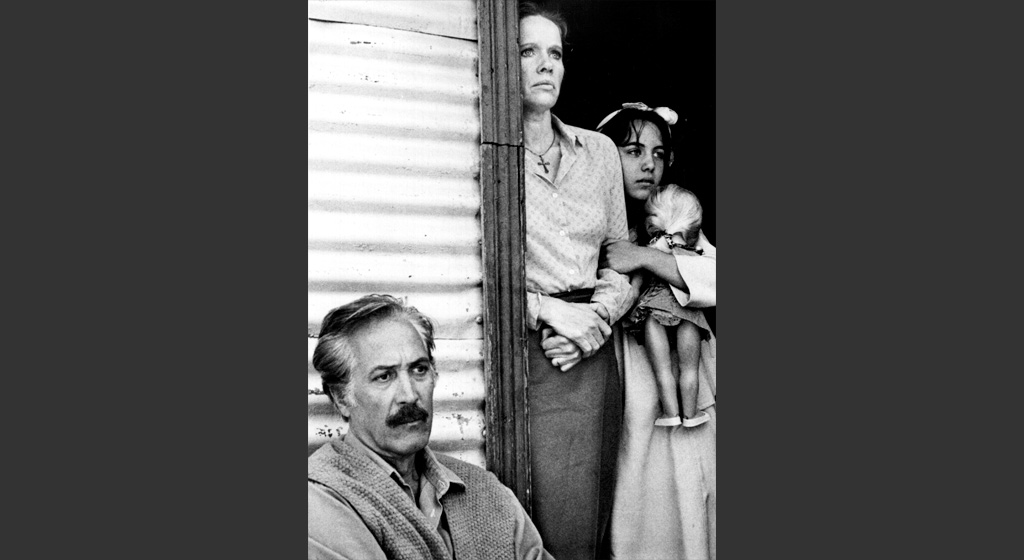
Liv Ulmann and Federico Luppi in "La Amiga"
The New Wave
During the 1990s, a lot of independent productions flourished as the ‘New Argentine Cinema Wave’. Eliseo Subiela examined more existential angst, following "Man Facing South East” (1986), with “El Lado Oscuro del Corazon” (The Dark side of the Heart) (1992), while Adolfo Aristarain’s “A Place in the World”(1992) was nominated for an Oscar.
At the start of the new millenium, Argentine films hit the international scene with a big impact, with the superb sting & twister film the “Nine Queens” (2000) by the hugely talented Fabián Bielinksy. He died, tragically, in 2006, of a heart attack in São Paulo, while casting for a commercial, aged only 47. A great loss. Brilliantly written & directed by Bielinsky, “Nine Queens” was produced by Pablo Bossi, shot by Marcelo Camorino, edited by Sergio Zottola with music by César Lerner. This crime- caper film also made a star of Ricardo Darín. Full of humour and hilarious gags, it stands out for its elegance and the intelligence of its storyline, with its ability to spring twists and surprises at every turn. Juan, (Gaston Pauls) a con artist scams a cashier, observed by Marcos (Ricardo Darin) who then persuades him that they should join forces to carry out a major scam, to swindle a stamp collector. The film garnered 21 awards and is considered a classic. (Film 6)
Post-Political Argentine Surrealism
At this point, Lucrecia Martel appeared on the scene with her finely nuanced studies of the people and the country, avoiding some of the more overt political methods of her contemporaries. In “La Ciénaga” (2001) (The Swamp), Martel exposes the hypocrisies of an indulgent bourgeois family who spend their summer festering and disintegrating in their decrepit vacation home in Salta, in the north west of Argentina. The cast includes Mercedes Morán, Graciela Borges and Martín Adjemián. Written by Martel, it is enormously powerful, despite its languid feel, this film prizes open a can of worms that express the troubles times of Argentina’s history to perfection. It is a masterpiece of film craft. (Film 7)
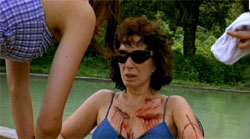 Graciela Borges in La Ciénaga
Graciela Borges in La Ciénaga
After “The Holy Girl” (2004) and the psychological thriller “The Headless Woman” (2008), Martel settled on a book by Antonio Di Benedetto, and produced a period film of acute observation and subtlety. Lucrecia Martel’s “Zama” (2017) is set in a vast swamp area of Paraguay, during the 18th century, just as control over the Spanish colonial territories is disintegrating. It relates the story of Don Diego de Zama (Daniel Giménez Cacho), magistrate and servant of the crown, who has been stationed in a God-forsaken outpost in Paraguay. In vain, he endlessly persists in his attempts to be posted back to Lerma, where he has his wife and children. Isolated and forgotten, he is surrounded by decay and the eternal swamps that reportedly harbour dangerous rebels led by Vicuña Porto, (Matheus Nachtergaele). He falls into a “nightmarish state of suspended existence surrounded by real and imagined threats” as he yearns for his long-awaited transfer. As Martel herself emphasizes: “I use fantastic elements but they have nothing to do with magic realism.” (Film 8) (See https://www.latinolife.co.uk/articles/zama-dir-lucrecia-martel-argentina).
Fine Art of Argentine Black Humour
Ricardo Darín probably owes much of his meteoric rise to the success of the “Nine Queens.” Since then, he has worked with renowned directors like Pablo Trapero and Fernando Trueba, as well as starring in the Oscar winning “The Secret in their Eyes” (2009) directed by Juan José Campanella. I have chosen two of Darín's films “Un Cuento Chino”(2011)(Chinese Takeaway) by Sebastián Borensztein and “Wild Tales” (2014) (Relatos Salvajes) directed by Damián Szifron. Ricardo Darín is a natural for comedy, as he proved in the “Nine Queens.” His capacity to understand the ordinary man and his foibles has shone through in all his roles, as has his ability for dead pan expressions and spot on comic timing. He is wasted in films that want a serious actor, such as “La Cordillera” (2017) (The Summit) by Santiago Mitre.
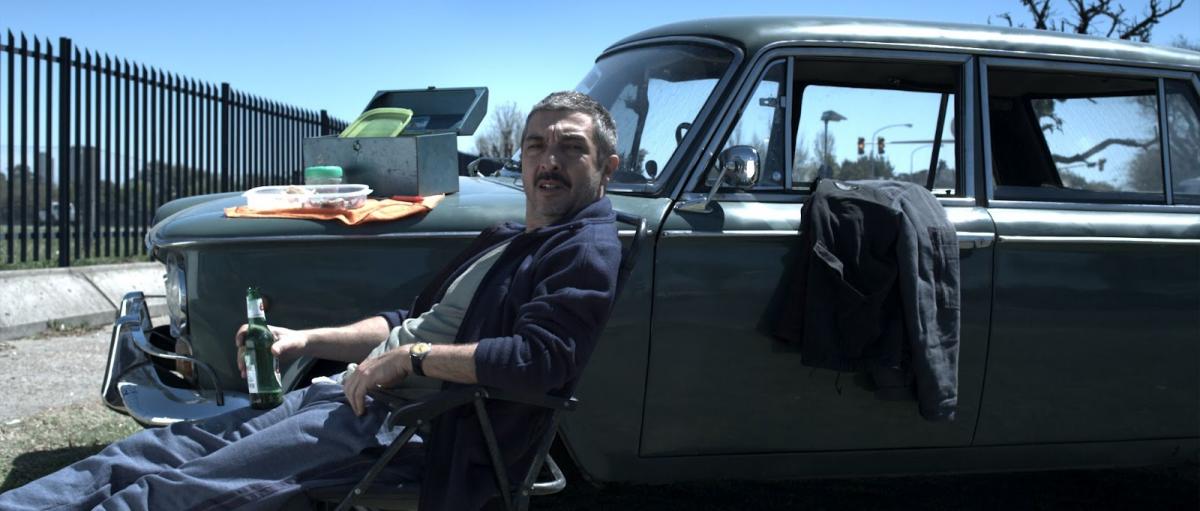
Ricardo Darín in Chinese Take- Away
“Chinese Take-away” (Un cuento Chino) was the highest grossing non-US film in Argentina in 2011. With warmth and humour, “Chinese Take-Away” brings together a multitude of issues and emotions, with hilarious observations of human interactions that most people can identify with. Control-freak Roberto (Ricardo Darín) is a hardware store manager who likes order in his life. When he feels that he has been screwed by inaccuracies relating to a new delivery of his boxes of ‘screws’, he feels the need to sue. He could be classified as OCD. So, when he witnesses a Chinese man, Jun (Ignacio Huang) being flung out of a moving car, he feels the need to put things to right there as well. Roberto has fallen into a hermit- like existence, avoiding commitment and putting off his would- be lover Mari (Muriel Santa Ana). Now, his life is thrown into turmoil as he realizes he must help this lost Chinaman find his uncle. Despite a total lack of knowledge of each other’s languages, they eventually manage to communicate on other levels. A powerful link is established when Roberto’s collection of newspaper cuttings reveals the story of a Chinese girl who was instantly killed by a cow that fell out of the sky, who turns out to have been Jun’s fiancée. This is a sweet & sour film about loneliness and integrity. (Film 9)
Pedro Almodóvar knows how to spot talent and with his brother Agustin and their company El Deseo, they produced the wonderful compilation of six outrageous shorts that resulted in “Wild Tales” (2014) (Relatos Salvajes) written and directed by Damián Szifrón. It has become the biggest grossing Argentine film of all time. It was nominated for an Oscar and won the well- deserved 2016 BAFTA for “Best Film Not in the English Language.” It swept the boards in many categories at many festivals.
In “Wild Tales” we have the pleasure of another outstanding performance by Ricardo Darín, as well as Leonardo Sbaraglia, Oscar Martínez, Erica Rivas, Rita Cortese, Darío Grandinetti and Julieta Zyllberberg, who all shine in their respective stories. These are tales of people in extremis, illustrating what people can get up to when they completely lose it. We are all caught up in the hilarious vision of director Damián Szifrón in these 6 richly diverse films and taken on a roller coaster ride. (Film 10)





